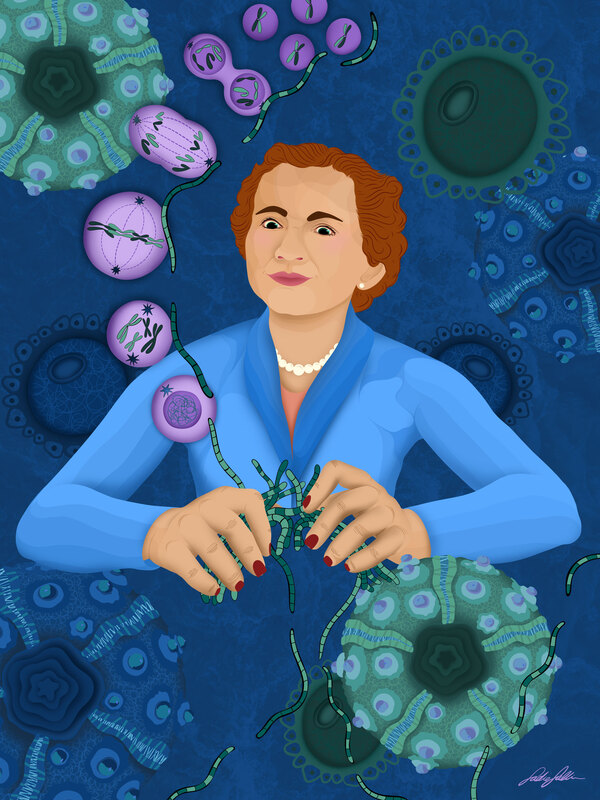|
Nettie Stevens (1861-1912)
Cavendish, Vermont, USA Digital Illustration, 24" x 32", 2022 Our sex chromosomes guide the cells in our body to develop female or male characteristics. We have Nettie Stevens to thank for this discovery.
Stevens was a geneticist responsible for the discovery of sex chromosomes. During a time when school was unavailable to most women, Stevens pushed herself to graduate at the top of her class. She earned a bachelors and a master’s degree and a Ph.D. in cytology. Steven’s work involved the research of regeneration in primitive multicellular organisms (sperm and eggs) and included the cell division of sea urchins and mealworms. Stevens found that male mealworms produced two types of sperm, one large and one small. When the eggs were fertilized by the large sperm, a female offspring occurred. When the eggs were fertilized by the small sperm, the resulting offspring were male. Nine years after obtaining her Ph.D., Stevens lost her life to breast cancer at age 50. Her chromosomal work was then credited to two separate male scientists, Edmund Wilson and Thomas Hunt Morgan. Wilson worked on spermatogenesis and gave no credit to Stevens. Morgan argued against Steven’s clarifications but he still used her work with no credit which eventually lead to his winning a Nobel Prize in 1933; he eventually acknowledged their “joint discovery” after Steven’s death. |
Proudly powered by Weebly
